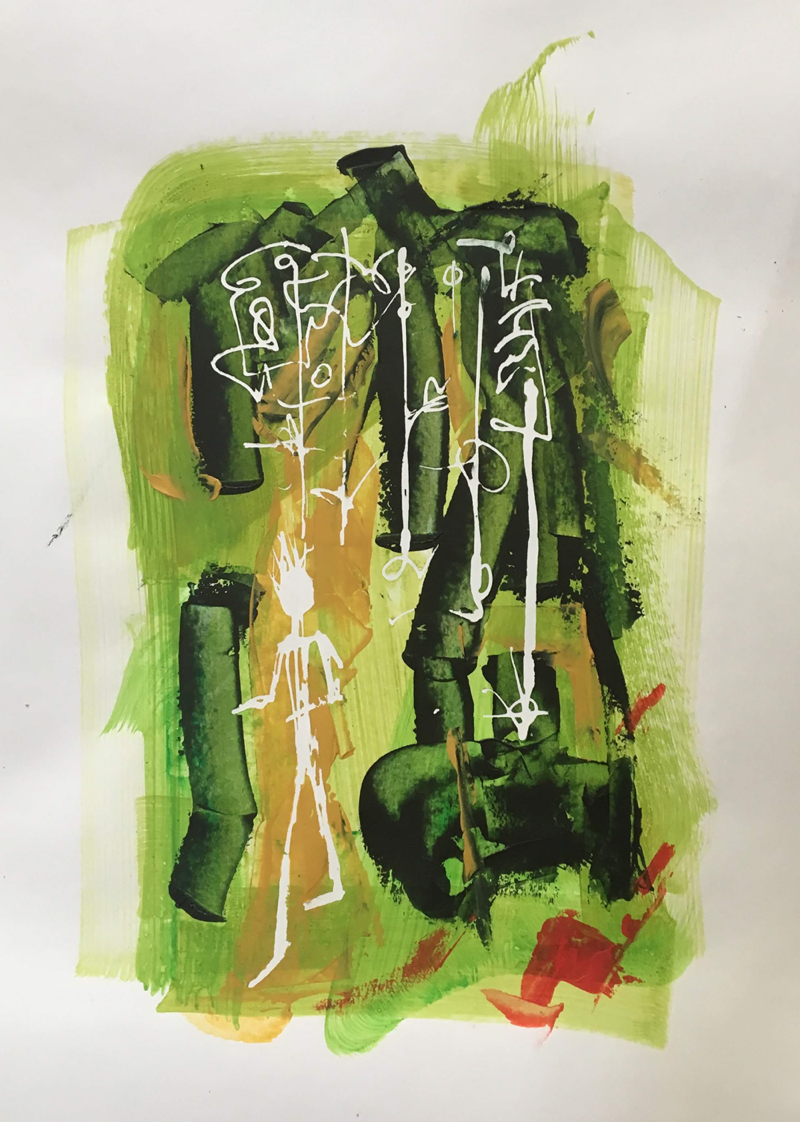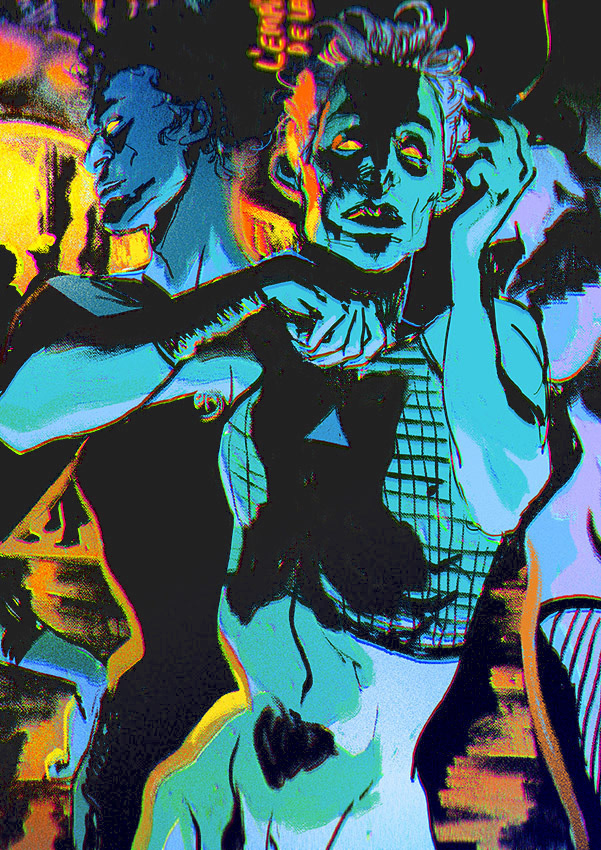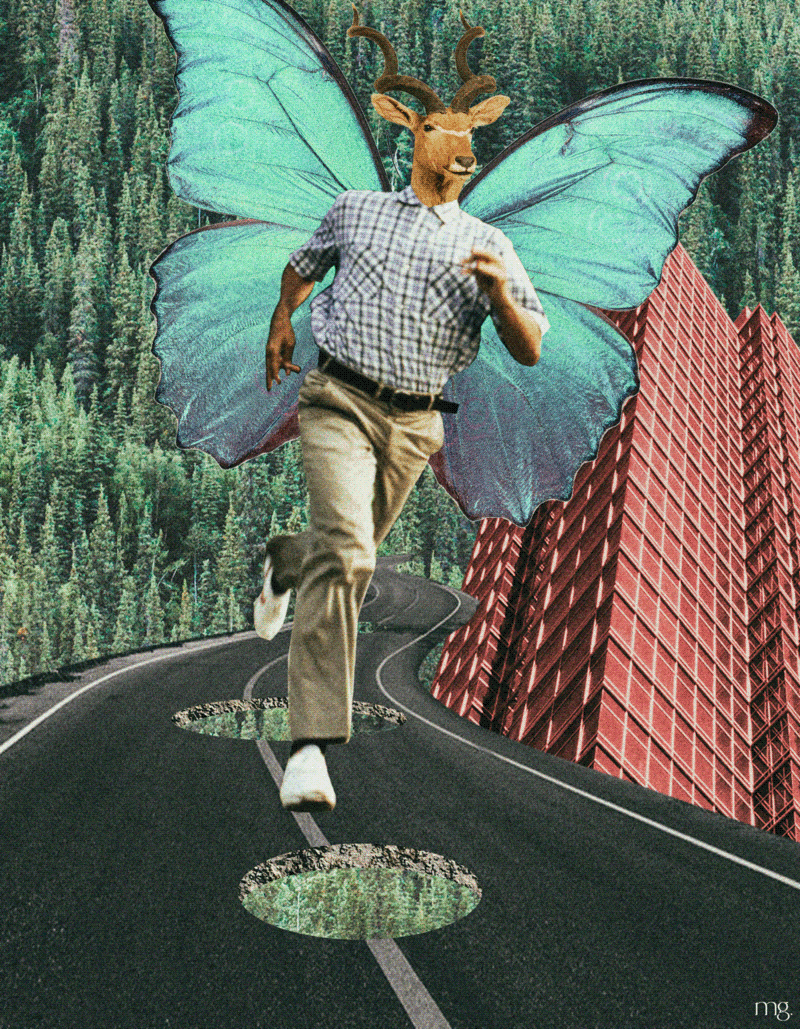
Expressionist Art in the New Twenties
JAAPH - January 2020
What is this about?
Expressionism Twentytwenty (XP2020) is a neo movement in art. We depict not objective reality, but our subjective emotions and responses. XP2020 continues from expressionists of the 1910's to the 1930's and movements like 'CoBrA' and the 'Neue Wilde'.
Key phrases:
- Emotion
Key phrases:
- Emotion
- Unconscious Processing
- Manual Touch
- Manual Touch
- Tone over Color
- Big Story
- Big Story
The XP2020 Behance Team
Human history evolves towards worldwide culture. On Behance, world wide groups can support and stimulate each other. Earlier expressionist groups were linked to
Human history evolves towards worldwide culture. On Behance, world wide groups can support and stimulate each other. Earlier expressionist groups were linked to
geography. The 'Blaue Reiter' was in Munich. Abstract expressionists were in New York. CoBrA even derived its name from cities: Copenhagen, Brussels, Amsterdam. Through the web we can now for the first time have a worldwide expressionist group.
Expressionism in history
Expressionism is a style of painting where 'the artist attempts to depict not objective reality, but rather the subjective emotions and responses that objects and events arouse in them'.
Expressionism in history
Expressionism is a style of painting where 'the artist attempts to depict not objective reality, but rather the subjective emotions and responses that objects and events arouse in them'.
One day I was visiting a museum in Rotterdam. I turned a corner and stopped breathing. I saw this painting by Max Beckmann.

Original Figurative Expressionism
Max Beckmann, Portrait of the Lütjens family, 1944
Max Beckmann, Portrait of the Lütjens family, 1944
Beckmann had fled to the Netherlands in 1937, after the Nazis condemned his work as degenerate ('entartete Kunst'). His anchor and refuge in Amsterdam was Helmuth Lütjens, depicted here with his family.
Mechanisms of expressionism
The expressionist artist substitutes to the visual object reality their own image of the object. The search for harmony and forms is not as important as trying to achieve the highest expressive intensity.
They usually accomplish this through five mechanisms:
The expressionist artist substitutes to the visual object reality their own image of the object. The search for harmony and forms is not as important as trying to achieve the highest expressive intensity.
They usually accomplish this through five mechanisms:
- Distortion
- Exaggeration
- Primitivism
- Fantasy
- Vivid colors.
Germany in the twenties
What I would now call ‘Figurative expressionism' bloomed in Germany, in the 1910's to the early 30's. Objects like landscapes, animals, people and so on - even though distorted - are still recognisable. Some forms are exaggerated and put into fantasy combinations, but they still have a ‘classical’ look. They are figurative with a twist. Well known German expressionists are Max Beckmann, Ernst Ludwig Kirchner and Emil Nolde. This movement had two main groups 'Der Blaue Reiter' ('The Blue Rider') and 'Die Brucke' ('The Bridge'). There was also a Kirchner-inspired group in the Netherlands, called "De Ploeg" (The Plow).
What I would now call ‘Figurative expressionism' bloomed in Germany, in the 1910's to the early 30's. Objects like landscapes, animals, people and so on - even though distorted - are still recognisable. Some forms are exaggerated and put into fantasy combinations, but they still have a ‘classical’ look. They are figurative with a twist. Well known German expressionists are Max Beckmann, Ernst Ludwig Kirchner and Emil Nolde. This movement had two main groups 'Der Blaue Reiter' ('The Blue Rider') and 'Die Brucke' ('The Bridge'). There was also a Kirchner-inspired group in the Netherlands, called "De Ploeg" (The Plow).

Original Figurative Expressionism
Max Beckmann; Journey of the Fish; 1933

Original Figurative Expressionism
Ernst Ludwig Kirchner; Winter Landscape in Moonlight; 1919; oil on canvas; 128 × 127 cm
Abstract expressionism
In the forties, the first expressionist movement of the '10s to 30's was followed by ‘Abstract expressionism’. The geographical centre was New York City. Abstract expressionists wanted to make art that, while abstract, was also expressive or emotional in its effect. They championed the idea that art should come from the unconscious mind. Well known abstract expressionists are Jackson Pollock, Willem de Kooning and Mark Rothko.
In the forties, the first expressionist movement of the '10s to 30's was followed by ‘Abstract expressionism’. The geographical centre was New York City. Abstract expressionists wanted to make art that, while abstract, was also expressive or emotional in its effect. They championed the idea that art should come from the unconscious mind. Well known abstract expressionists are Jackson Pollock, Willem de Kooning and Mark Rothko.
For more on expressionism see Tate: art and artists

Abstract Expressionism
Jackson Pollock; Convergence; 1952
Jackson Pollock; Convergence; 1952

Abstract Expressionism
Mark Rothko; Orange and Yellow; 1956; oil on canvas
Mark Rothko; Orange and Yellow; 1956; oil on canvas
Two more expressionist movements: CoBrA and the Neue Wilde
The original ‘figurative’ and abstract expressionists were followed by two more expressionist movements: CoBrA (in the fifties) and the Neue Wilde in the eighties.
CoBrA had Karel Appel and Carl-Henning Pedersen as important protagonists. I call this movement 'Abstracted-Folkloric Expressionism'. People and animals are shown in a highly distorted, abstracted form, but they are still be recognized. CoBrA artists mostly focused on folkloric themes like men, women, children, trees and animals.
The Neue Wilde (New Wild Ones) emerged in the eighties, with Rainer Fetting and Helmut Middendorf as important representants. They are a modern variant of the original German expressionism of the '20s and '30s. They represented a return to painting from the cerebral, conceptual, minimalist art that had been in vogue in the sixties and seventies. They were linked to the punk movement in music.
The original ‘figurative’ and abstract expressionists were followed by two more expressionist movements: CoBrA (in the fifties) and the Neue Wilde in the eighties.
CoBrA had Karel Appel and Carl-Henning Pedersen as important protagonists. I call this movement 'Abstracted-Folkloric Expressionism'. People and animals are shown in a highly distorted, abstracted form, but they are still be recognized. CoBrA artists mostly focused on folkloric themes like men, women, children, trees and animals.
The Neue Wilde (New Wild Ones) emerged in the eighties, with Rainer Fetting and Helmut Middendorf as important representants. They are a modern variant of the original German expressionism of the '20s and '30s. They represented a return to painting from the cerebral, conceptual, minimalist art that had been in vogue in the sixties and seventies. They were linked to the punk movement in music.

CoBrA
Karel Appel; La Fleur et les oiseaux (The Flower and the Birds); 1951; 73 x 92 cm.
Karel Appel; La Fleur et les oiseaux (The Flower and the Birds); 1951; 73 x 92 cm.

CoBrA
Carl-Henning Pedersen, Fairytale picture, 1943, Oil on canvas.
Carl-Henning Pedersen, Fairytale picture, 1943, Oil on canvas.

Neue Wilde
Rainer Fetting; Crazy Face; 1984; Oil on canvas; 162 x 153 cm
Rainer Fetting; Crazy Face; 1984; Oil on canvas; 162 x 153 cm

Neue Wilde
Helmut Middendorf, Elektrische Nacht, 1979
And now: XP2020 – Expressionism Twentytwenty
Today we have a new expressionist movement, called ‘Expressionism TwentyTwenty', representing 'Expressionist Art in the New Twenties'.
Today we have a new expressionist movement, called ‘Expressionism TwentyTwenty', representing 'Expressionist Art in the New Twenties'.
What is it?
TwentyTwenty refers to:
- The year 2020.
- The link between the nineteen 20’s when European expressionism was blooming and the two-thousand 20’s, which is our time.
- A little pun on 20/20 vision (optically perfect vision). As a symbol for the desire to 'achieve the highest expression intensity'.
Characteristics of XP2020
Expressionism TwentyTwenty has five characteristics.
Expressionism TwentyTwenty has five characteristics.
1. Emotion
Striving for intense emotional expression. This is achieved through the classical means of all 4 expressionisms that went before:
a. distortion
b. exaggeration
c. vivid color palette.
With this characteristic, XP2020 is building on the original figurative expressionists.
Striving for intense emotional expression. This is achieved through the classical means of all 4 expressionisms that went before:
a. distortion
b. exaggeration
c. vivid color palette.
With this characteristic, XP2020 is building on the original figurative expressionists.
2. Unconscious Processing
Striving to express images coming – at least partly – from the unconscious mind. Twentytwenty considers unconscious impulses as a necessary influence, but never a dictate. The ideal is a perfect cooperation between conscious and unconscious processes. With this characteristic, XP2020 is building on the abstract expressionists of the ’40s to the ’70s.
Striving to express images coming – at least partly – from the unconscious mind. Twentytwenty considers unconscious impulses as a necessary influence, but never a dictate. The ideal is a perfect cooperation between conscious and unconscious processes. With this characteristic, XP2020 is building on the abstract expressionists of the ’40s to the ’70s.
3. Manual Touch
Parts of the painting may be created with a computer, but some part is always done by hand, safeguarding the direct link with the unconscious mind. With this characteristic, XP2020 is building on the Neue Wilde from the ’80s who returned to direct painting from computer generated and conceptual art forms.
Parts of the painting may be created with a computer, but some part is always done by hand, safeguarding the direct link with the unconscious mind. With this characteristic, XP2020 is building on the Neue Wilde from the ’80s who returned to direct painting from computer generated and conceptual art forms.
4.Tone over Colour
If recognizable objects are depicted (which is not always the case, since there is abstract expressionism too in XP2020), colours will be substituted freely by other colours, but the tone is roughly realistic. With this characteristic, XP2020 is building on 'De Ploeg‘ a local Dutch expressionist movement in ’20s and ’30s.
If recognizable objects are depicted (which is not always the case, since there is abstract expressionism too in XP2020), colours will be substituted freely by other colours, but the tone is roughly realistic. With this characteristic, XP2020 is building on 'De Ploeg‘ a local Dutch expressionist movement in ’20s and ’30s.
5. Big Story
It is often said that the art speaks for itself. It doesn't. The 2020-ist tells a story in words, linking their painting to bigger themes: bigger than the painting and larger than their life. Often stories about the human condition. The story connects the work to its purpose. Explicitly. With this characteristic, XP20/20 is adding an element that has been present in the work many expressionist artists, but which had not been formalized yet.
It is often said that the art speaks for itself. It doesn't. The 2020-ist tells a story in words, linking their painting to bigger themes: bigger than the painting and larger than their life. Often stories about the human condition. The story connects the work to its purpose. Explicitly. With this characteristic, XP20/20 is adding an element that has been present in the work many expressionist artists, but which had not been formalized yet.

XP2020
JAAPH, Psychologists on the beach, 2019, Acrylics on canvas; 90 x 90 cm
JAAPH, Psychologists on the beach, 2019, Acrylics on canvas; 90 x 90 cm

XP 2020
Uwe Hoche, Symbolic Interaction, Drawing Gum, Acrylic Paint, 2018
Uwe Hoche, Symbolic Interaction, Drawing Gum, Acrylic Paint, 2018

XP 2020
Marina Aleph, "C'est l'amant vert de gris", Photoshop, 2019
Marina Aleph, "C'est l'amant vert de gris", Photoshop, 2019

XP 2020
Raiber González Hechavarría, El viejo, acrylic on canvas 90 x 90 cm, 2016
Raiber González Hechavarría, El viejo, acrylic on canvas 90 x 90 cm, 2016

XP 2020
Mouhcine Laghazal, Run Wild, Photoshop, 2018
Mouhcine Laghazal, Run Wild, Photoshop, 2018
A schematic overview of the five expressionisms

